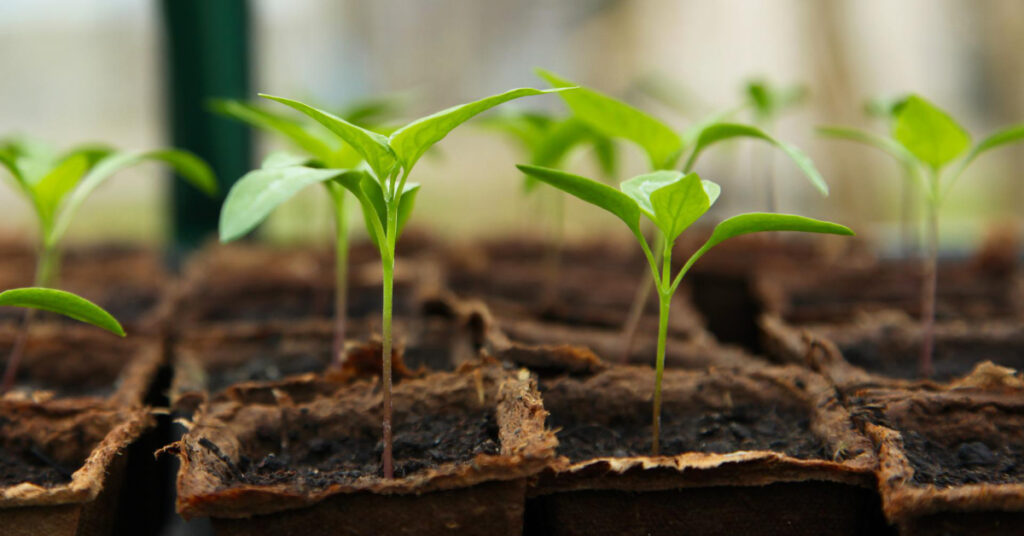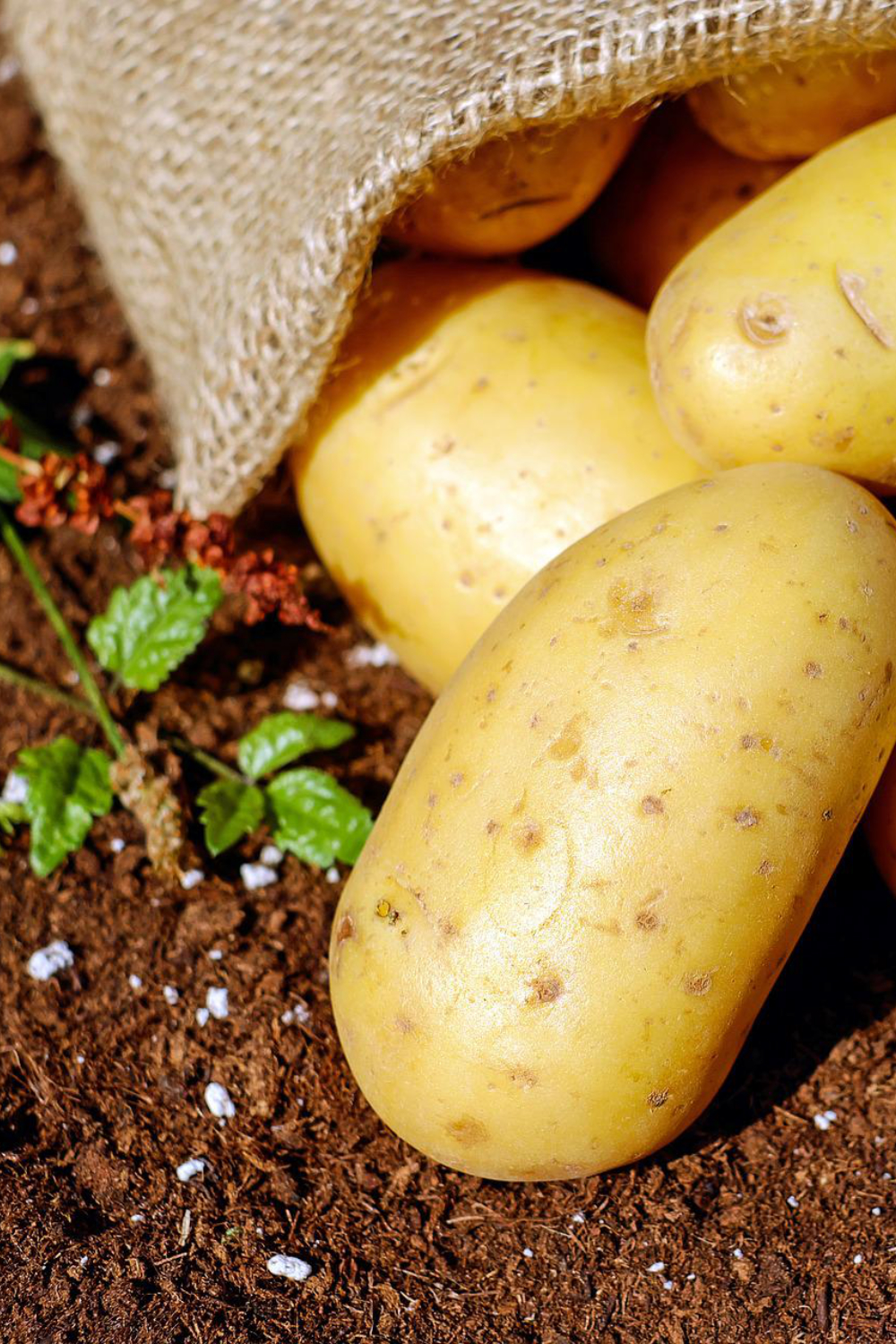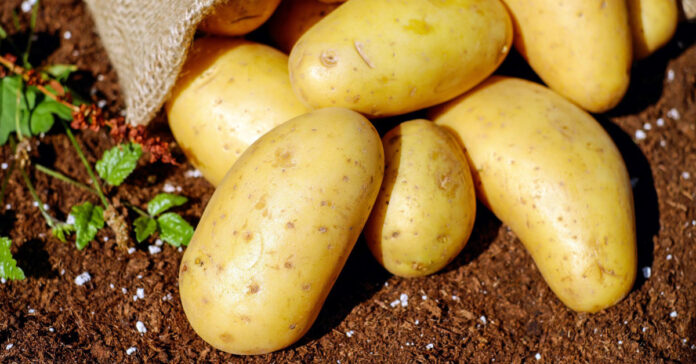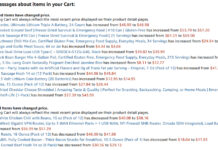Our efforts to raise our own food continue. I picked up my latest nucleus hive and installed the bees in a full-size beehive yesterday afternoon. I also added a queen excluder and a honey super to my largest hive. The spring honey flow is not here yet, but this hive was doing so well, I wanted to give them some extra room and allow them to start drawing out comb.
My potatoes have sprouted, and it looks like every seed potato I planted germinated. The sprouts are tiny, barely pushing above ground level, but it’s a positive sign. My plan is to wait until the plants are larger and then add a couple inches of straw as mulch around and under them. The cabbage and Swiss Chard I transplanted are alive, but they are not yet flourishing.
How is your Garden Doing?
If you are not planning to raise some of your own food this year, I’d suggest you reconsider. I’m not suggesting that you become food-independent by summer or anything like that, but I think there is value in raising some food just in case. I’m going to list some ideas and suggestions below, but first let me explain why producing some of your own food is a good idea.
For all the reasons we have covered previously, we expect a global food shortage. That’s different from a complete lack of food. The shortage will last least a year, likely several. The shortage will drive up food prices as people compete for a limited supply of food. Raising some of your own food could help you save money.
If the powers-that-be implement some sort of rationing system, it might limit how much food or calories you can buy. If that happens, people will get fewer calories than they are used to. In that is the case, having some home-grown food to add those missing calories back into your diet could be helpful.
You may think, “I’ll just eat food from my preps.” That is not a bad idea, but what if the crisis last multiple years? Do you have enough food in your prepper pantry to last through a multi-year Venezuelan-like collapse? By planting a small garden, starting a few containers, or taking other steps to produce your own food, you can not only raise some food but get the practice you need and build the skills required to produce even more food next year.
Start a Survival Garden
Many people with small backyard gardens plant tomatoes, peppers, and cucumbers, but these are not the best plants for a survival situation where your aim is to produce calories. I’m not saying don’t plant tomatoes or peppers; I’m saying that they won’t feed you as well as some other choices. Here are my survival garden suggestions:
Root Vegetables and Tubers
Potatoes can provide many calories per plant, and you can grow them in large containers such as 5-gallon pails. There are varieties of potatoes available for almost every conceivable climate, so pick one that will do well in your environment. (Note that you don’t buy packets of potato seeds. You must start with seed potatoes, although some people have good luck planting grocery store potatoes that have sprouted.) Sweet potatoes and yams are an alternative for those in warmer climates.
Beets have the advantage of feeding you with their leaves and their roots (the actual beet.) Like potatoes, beets are also calorically dense. Other root vegetables, like turnips, carrots, Jerusalem artichoke, and rutabagas, are good choices.
Greens
Lettuce is pretty easy to grow and can produce a large volume of leafy greens you can consume raw, but plants like kale and spinach are more nutritious. In warmer climates, you need to plant them early for a spring harvest and again in late summer for a fall crop. In some climates, kale will grow throughout the growing season, allowing you to regularly harvest leaves. There are multiple other greens you can grow, like the Swiss chard we are growing, collards, mustard greens, and turnip greens. Pick something you are likely to eat.
Cabbage is another good crop and one head is large enough to serve for several meals. It also stores well. In the same vegetable family are broccoli, cauliflower, Brussels sprouts, and bok choy.
Squash
Squash can also provide a good quantity of food per plant. Summer squash, like zucchini and yellow squash, can be so prolific you may want to freeze or give away a portion of your harvest. Winter squash get their name for their ability to keep well into the winter without refrigeration. Some varieties, like butternut and acorn, will be familiar from the grocery store, but there are many others to consider. Best of all, you can often pull out summer squash plants after harvest and plant winter squash in the same space for greater efficiency.
This is just a brief list. Add to it as your tastes, time, and garden space allow. Things like beans and peas are a good choice, if you have sufficient room.
Urban Gardening
Gardeners with a few acres of open land have it made. They can plant where they know the sun will shine, and they sufficient have room to plant row crops like corn and peas.
If you have a small back yard, it may limit where you can plant. My advice is to work with what you have, planting in the sunniest spot available. Some urbanites have transformed pedestrian backyards into highly productive gardens. It just takes time, effort, and commitment.
If you live in an apartment, you may have no outdoor space. This limits you to planting in containers on a balcony or raising plants indoors. Container planting does work, but the size of your containers may limit your production. It is also not cheap to invest in the containers and the dirt, but you can reuse most of your investment in subsequent years.
If you have the space, you can use grow lights and trays to raise micro greens indoors. You could also invest in a small hydroponic system. Both will require time and attention, as does traditional gardening. This is a not a plant it and forget it operation.
Seed Availability
It’s easy to go into a big-box store and buy the packet of seeds for $1 or so, but you may have better luck with seeds from a local garden center that has selected seeds for your specific area. You can also buy flats or small plants ready to be transplanted into your garden. Use some common sense and don’t spend $5 on a plant that will yield $3 worth of food.

Check with your county extension agent and see if they have a calendar that shows the best planting or transplanting time for each vegetable.
Livestock
I am a firm believer in small livestock as a source of food, especially chickens, rabbits, and bees. These sound like homestead animals, but all can be grown in an urban environment where you have some outdoor space and a good fence. (In the suburbs, I had a neighbor who raised dozens of chickens.) Before investing in livestock, check with your local municipality as they may limit how many you can raise. If you raise chickens, your neighbors will know, but you can raise rabbits in your garage on the down-low. If you do it right, they will make no noise and will not smell. You can also use their manure to fertilize your garden.
Beekeepers have successfully raised on balconies and rooftops in Los Angeles and New York City; chances are you can raise bees wherever you live. If you want only one hive and have little or no desire to expand your production, look into the Flow Hive, which allows you to harvest honey straight from the hive into a jar. While more expensive than a traditional Langstroth hive, it offers some advantages for the small-scale beekeeper who does not want to lift heavy boxes of honey or fuss with decapping and extracting frames of honey.
A standard Flow Hive can hold up to 39 pounds of honey. That’s about 54,000 calories worth. Depending on your location, you may be able to make multiple harvests per year. I know a beekeeper that has seven Flow Hives. He sells honey by the quart.
The Layered Approach
When I talk about the layered approach to food storage, I start with a prepper pantry of shelf-stable everyday grocery store items, add grains and dehydrated foods in 5-gallon pails and #10 cans, followed by high-dollar foods such as MREs and freeze-dried foods. Given the current situation may be a global food shortage rather than a more traditional disaster, it’s worth adding an additional layer: raising your own food.
Spring is the best time to get started. Consider that a hint.








